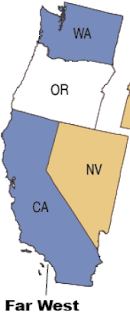In an earlier commentary, we examined the impact of the Covid-19 outbreak on enrollment in Medicaid, the national health insurance program for eligible individuals with limited income and resources. Historically, Medicaid enrollment increases during economic downturns. Soft economic conditions create more unemployment, more people without employer-sponsored health insurance, more people with lower household incomes, and more people who qualify for health insurance coverage through the Medicaid program. This is in contrast to periods of robust economic activity, when enrollment tends to drop off and even decline.
Like previous economic downturns, the Covid-19 induced contraction of economic activity has seen a jump in Medicaid enrollment, and agencies that manage the Medicaid program in each state now forecast still more growth in enrollment. After recent years of stagnant enrollment numbers, every region of the U.S. has witnessed a bump in its Medicaid enrollment since the Covid-19 outbreak began. In the six-state Far West region, the impact of the Covid-19 outbreak has been less severe than in other sections of the country, as Medicaid enrollment in the region grew 4.2%, as compared to 6.5% nationally, during the first half of 2020. Here's a quick look at Medicaid enrollment growth at the state and regional level in the Far West region during the first half of 2020:
 |
| Covid-19 and Medicaid Enrollment in the Far West Region |
| Medicaid Enrollment (in 000s) | |||||
|---|---|---|---|---|---|
| State | July 1, 2020 | Jan 1, 2020 | Growth | ||
| AK | 218.5 | 207.3 | 5.4% | ||
| CA | 10,615.8 | 10,300.6 | 3.1% | ||
| HI | 332.5 | 300.2 | 10.8% | ||
| NV | 657.5 | 586.1 | 12.2% | ||
| OR | 935.5 | 870.9 | 7.4% | ||
| WA | 1,733.9 | 1,642.8 | 5.5% | ||
| FW Only | 14,493.7 | 13,907.8 | 4.2% | ||
| National | 68,826.6 | 64,621.4 | 6.5% | ||
Source: Medicaid.gov Enrollment Reports.